Every June I attend a gathering of bamboo rod builders and aficionados on the banks of the Henry's Fork River. These gatherings are a chance to visit with friends, try out a variety of new and classic rods, and observe a lot of flycasting. This year's gathering did not disappoint. Some of the most interesting talk revolved around the question of casting styles.
It’s long been my belief that the word "style" is generally misused in reference to casting. All too often, "style" is invoked to describe what is actually flawed technique. That is, a kind of "style" is attributed to a caster as a way to explain the look of his casting, when what really explains the look is nothing more than poor technique. Truth be told, only those individuals that possess fundamentally sound technique should be assigned a “style".
Consider professional golfers. By and large, they all possess good technique (sound fundamentals), but close examination of their swings reveals that no two golfers look exactly alike. They all have slightly different ways of accomplishing the same thing. Indeed, they have different styles. Style always follows good fundamentals; you can't be said to have one until you own the other. For the majority of amateur golfers, the errors in their swings are not manifestations of a particular style. They are errors of technique.
The same is true for fly casters. The vast majority of us have fundamental flaws in our casting strokes. Consequently, we do not really own a “style", since our strokes are best defined by their faults. There's nothing wrong with this at all. Actually, it’s to be expected. Most of us have never taken fly casting lessons, and among those who have, many have been subject to questionable teachings.
Here are a couple examples of common casting flaws often chalked up to “style”. The first is moving the elbow parallel to the ground during the casting stroke, in a pushing and pulling motion. This causes numerous problems, among them tailing loops (a cause of wind knots) and a line trajectory that’s low on the backcast and relatively high on the forward cast. Casters offset this flaw by canting the rod to the side and incorporating a “flying elbow” or “chicken wing” motion at the end of the forward stroke, a contortion where the elbow flies up and out from the body while the forearm pivots down. This movement—physically taxing to the arm and shoulder—is necessary to prevent the line from running into itself or the rod when using this push-and-pull casting stroke. Another common flaw is flexing the wrist excessively during the stroke. Consequences of this include wide, aimless loops, a tired hand and forearm, and an inability to straighten out the line and leader.
More Like This
You might wonder what a stroke that qualifies as fundamentally sound looks like. Watch the video below. It’s a brief, slow-motion video showing the stroke of Chris Korich, champion caster. Regarding the points I just mentioned, note the amount of wrist flex he employs (and when he employs it, a topic for another day) and also how the rod, forearm, and upper arm remain in one plane throughout the stroke. His elbow also moves up on the backcast and down on the forward cast, never parallel to the ground. These are all characteristics worth appropriating. If asked to describe Chris’s style, I’d call it very compact, tightly controlled, and powerful.
Harboring a few casting flaws doesn't necessarily mean our time spent fishing will be any less enjoyable than it would be if we were as skilled as Mr. Korich. Far from it. Casting comprises only part of the game, and in many places it’s not a critical factor. But I do think we're better off when we recognize our shortcomings and work to improve them, rather than shielding them behind the guise of “style". And I can assure you that improving your casting does go a long way towards improving your catching. So let's reserve any descriptions of style for those among us who deserve them—the fundamentally sound.










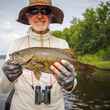


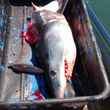





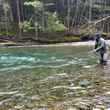
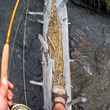




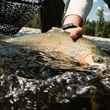
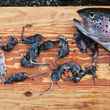
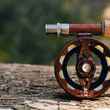

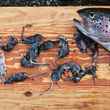
Comments
Bob DeMott replied on Permalink
Well said, John!
Chris Korich replied on Permalink
Finally... Proof to my daughters that I DO have style! Thank you Mr. Juracek!!
Michael Aldrich replied on Permalink
The point of casting is to get the lure (yes a fly is a lure) to the fish. The point of a golf swing is to get the ball into the hole. Good technique accomplishes this. Bad technique won’t.
mike young replied on Permalink
I have been helped by the JEDI. I have seen him cast in action, he has helped me with my casting. It has helped me with accuracy, power and distance. He is truly the 2016 gold medal accuracy men's world champion.
Rob Mellors replied on Permalink
As institutions such as the FFF look more into describing and creating a common language for the "technique" and component parts of fly casting, e.g. The Five essentials, I must admit that when the term "style" comes into the discussion I become a bit bemused by it. Technique I can get, there is a logic to it, but to use the term "style" without defining the actual style itself doesn't mean that much to me. I'm not convinced that like "technique" there is a clear definition of the different "styles". If there is then somebody please put me in the right direction for me to inwardly digest and understand its relation to improving my understanding of flycasting! A subject I enjoy! Thank you, a thought provoking article!
Dano replied on Permalink
How do you pick up 50' of line that easily? I need to add a haul anytime I am lifting maybe 40' or more just to keep my line from hitting the ground behind me. Maybe I am bringing the rod back too far?
Greg replied on Permalink
Remember that the line is going to go in the direction the rod tip travels. If you take it back too far and the tip is headed downward the line while go towards the ground. Good loops at 50' arent easy to carry for an intemdiate caster without a haul, but 40' shouldn't be too much trouble. Watch the 5 Essentials videos Carl McNeil has on YouTube. These will help for sure!
Andrew Wesner replied on Permalink
Casting and fishing are two different things that share the same equipment. I can cast "pretty" when I want to but it is seldom necessary when fishing and often the wrong strategy (I'm a Spring Creek angler, btw). Getting the fly to the fish without him noticing anything amiss is the goal of my casting and I have developed a "style" that works pretty well. I'm not aware of mechanics when I am trying to make one cast to a fish on the Henry's Fork because that's all I'm gonna get. Whether it's a technically sound loop or a bow and arrow cast from under a willow, it doesn't matter. Sometimes my casting is quiet and sometimes I look like Keith Moon on his drum kit after an ankle injection!
Casting is a great thing to do after lunch in the heat of the day while you're waiting for the late afternoon to arrive (I usually just drink beer and take a nap). When the fishing starts, any cast that works is a good cast...
Ray replied on Permalink
Yes!
Ray replied on Permalink
Casting fundamentals are indeed essential, but pulling the trigger in front of a moving target trumps style or technique. I've fished with some incredible casters, guys who can throw wicked loops on a lawn, but then totally fold when a GT or permit cruises within range. For this, only experience will suffice. Bottom line, pretty loops don't always catch fish.
Joe Mairo replied on Permalink
I surf as well as fly fish. Only when you are comfortable will you develop style. Style comes with comfort. I don't think it's necessarily bad technique. At the end of the day, if you can put a fly where you want it and catch fish, you're probably making a decent cast. I'm all for working on getting perfect technique, but just this morning I was largemouth bass fishing and there was a slight hill behind me. I had to adjust my stroke a lot to avoid hanging up behind me. If I had that perfect stroke like in the video, I probably would've hooked the tall grass behind me. I work on technique every time I fish but I try not to overthink it too much.
Ray replied on Permalink
Exactly. Once you are comfortable/confident in your style/ability, you can improvise when improvisiion is called for. I teach art. I train my students to break the rules, but roes can only be broken when you have mastered them.
Joe Mairo replied on Permalink
I love that - rules can only be broken when you've mastered them. I have the utmost respect for technique, tradition, my elders and teachers, and rules - but we should all shoot to take all of that and built something new that's uniquely our own. Tight lines my friend.
TBone replied on Permalink
This is actually a poor article. None of the things mentioned are actually fundamentals. Straight Line Path of the Rod Tip is a fundamental it can be achieved in multiple ways either by pulling like is commonly taught and is demonstrated in the video or by pushing and extending the elbow. The reason pushing might cause tailing loops is because of the bend of the rod as it loads causing a concave path of the rod tip breaking the fundamental of the straight line path. This can be mitigated by rotating the wrist through the stroke or by having a convex path of the hand through the stroke or having a stiffer rod that only loads in the very tip most part. Either way these are two different styles to make the rod do the same thing. You throw open loops by having a convex path of the rod tip which may be caused by using too much wrist movement or using the wrist too early. These things are also affected by rod action and body type. If Chris was using a much softer rod to cast the same distance he would need a longer stroke and his cast would look different. Lefty Kreh uses a somewhat sideways rod plane and uses body rotation along with arm movement to increase stroke length. This is a style completely different from the one demonstrated by Chris. Lefty teaches it because it has the benefit of using your body for people with weaker arms. If you listen to Lefty teaching though you will hear him talk about maintaining the straight line path of the rod because he understands the actual fundamentals to fly casting.
Pages